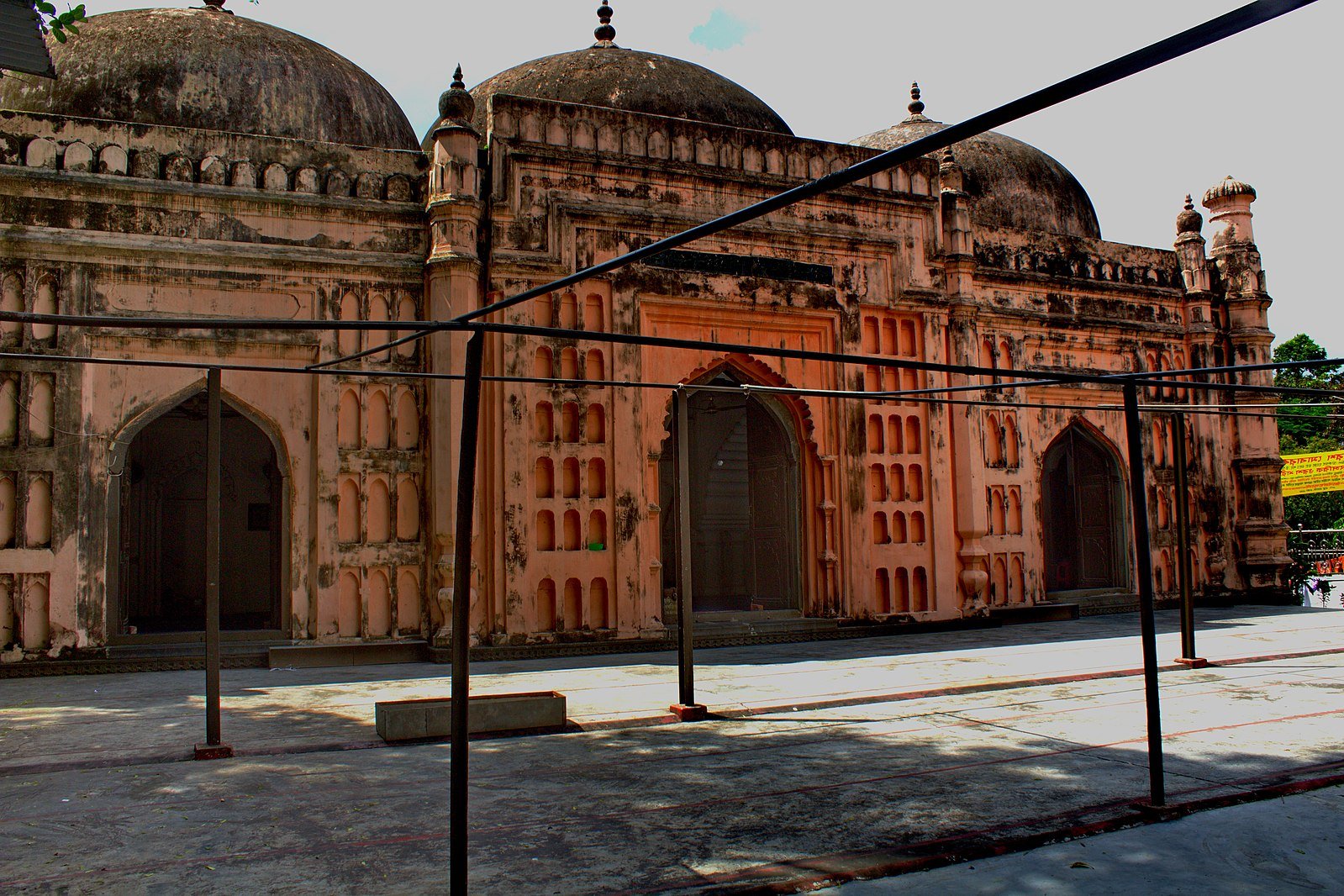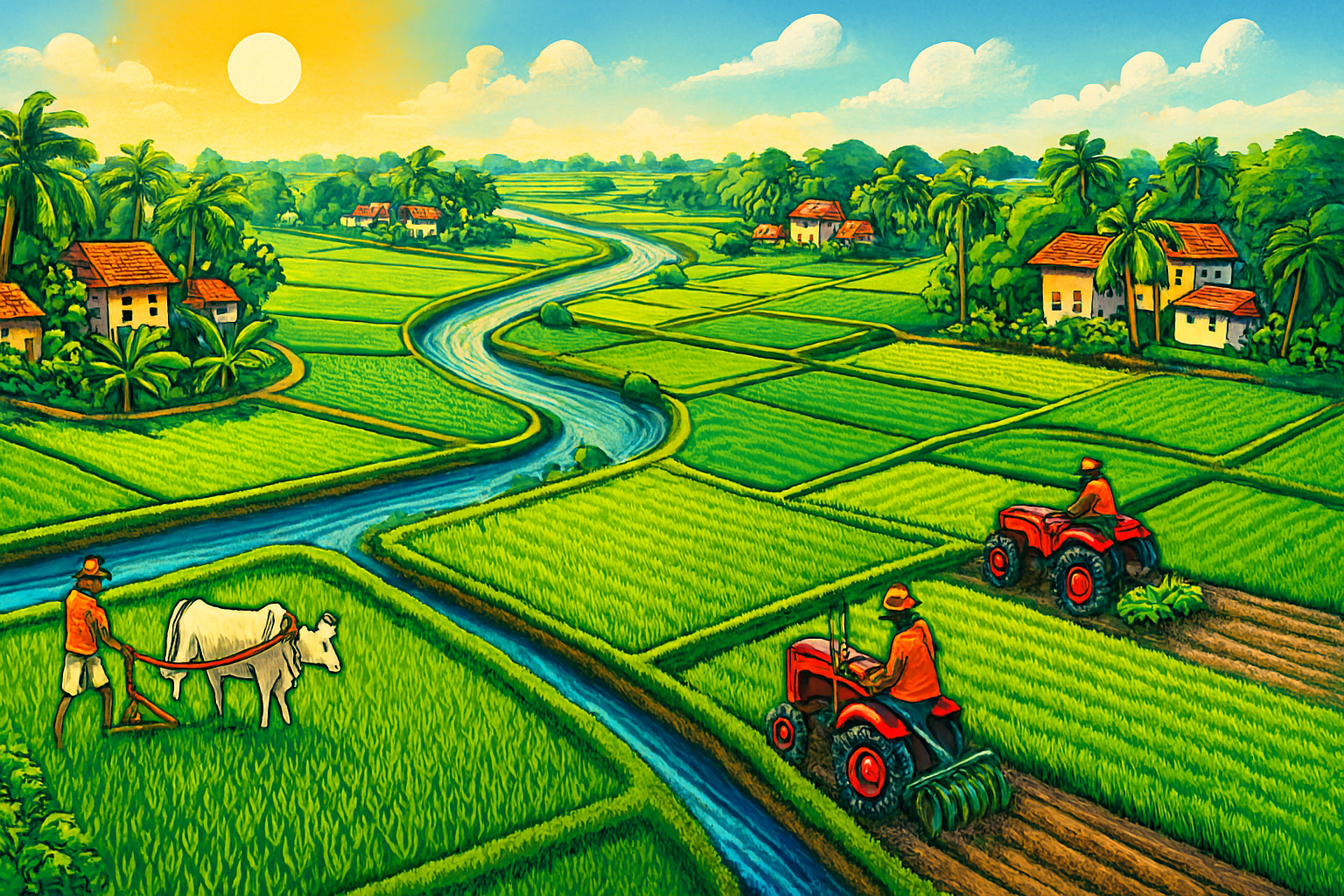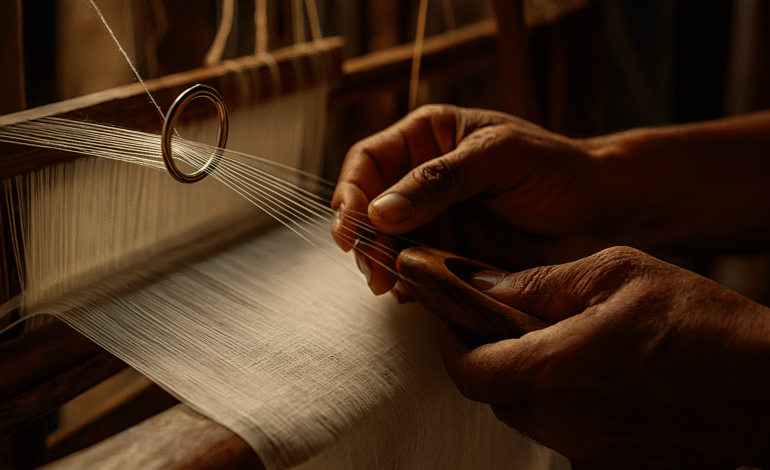Muslin: Bangladesh’s Lost Fabric, Rediscovered
Muslin once known as the pinnacle of textile craftsmanship in Bengal. For centuries, the finest version of this fabric — often referred to as “Dhakai Muslin” — was woven along the rivers of eastern Bengal and worn by emperors, aristocrats, upper-class and export-markets around the world. But over time, muslin virtually vanished from the region, its techniques lost to colonial disruption and industrialisation. In recent years, Bangladesh has launched efforts to revive this heritage fabric, restoring part of its legacy while opening new possibilities for artisan economies and global luxury textiles.
Origins & Splendour of Muslin
The story of muslin begins in the fertile, river-rich lands of Bengal. According to research, Bengal’s textile industry produced extraordinary muslin cloth, with some weaves so fine they were described in legend as being able to pass through a ring. From the banks of the Meghna, Shitalakshya and other waterways, weavers cultivated a rare variety of cotton known as phuti karpas, spun with extreme finesse, and woven into fabrics with thread-counts ranging between 700 to 1,200 yarns.
The fabric was known by names like Malmal Khas, Jhuna, Khassa and Shabnam — each representing subtle variances in fineness and purpose. Muslin from Dhaka quickly became a luxury item, exported globally via European trading companies in the 17th and 18th centuries. As a contemporary article noted, “Dhakai muslin was stitched from threads so fine that popular folklore in European parlours held that a change in the light or a sudden rain shower would render its wearer apparently naked.”
The Decline of Muslin
Despite its glory, the muslin industry declined dramatically by the late 18th and early 19th centuries. Several intertwined factors led to its disappearance: the decline of the Mughal patronage structure; British colonial economic policies that favoured machine-made textiles; loss of the rare phuti cotton; and deliberate sabotage of local textile skills, according to historians.
One shocking narration describes how weavers were punished under the East India Company, reportedly including the amputation of thumbs to prevent them weaving the fine cloth again. When the British Industrial Revolution sped up, the traditional hand-loomed muslin—labor-intensive and costly—could not compete with mass-produced textiles. The result: a brilliant craft faded, and for decades the world assumed the finest muslin was lost forever.
Revival Efforts in Bangladesh
In recent years, Bangladesh has embarked on one of the most ambitious heritage-revival projects of its kind: to bring back muslin to life. The project titled “Bangladesh’s Golden Tradition: Muslin Yarn Making Technology and Recovery of Muslin Fabrics” began around 2018, with a budget of Tk 12.1 crore. The task was monumental: to first rediscover the right cotton plant, train weavers who had not practiced the craft for generations, redesign looms, recover spinning techniques, and then produce fabric of comparable fineness to the original.
According to reports, researchers from the Bangladesh Handloom Board (BHB) and several universities spent years analysing DNA sequences of old muslin samples (including those held in the Victoria & Albert Museum in London) to rediscover the phuti cotton species. Weavers were retrained in villages like Chandina and Debidwar (Cumilla district), and a production hub was set up in Narayanganj.
By 2020, for the first time in 170 years, a muslin sari woven in Bangladesh was produced that could pass the ring test — a long-standing benchmark of muslin’s fineness. The revival project progressed into its second phase around 2023, focusing on technical refinement, private-sector involvement, and commercial scalability.
Why Muslin Matters for Bangladesh Today
The resurgence of muslin is significant not just for heritage reasons, but also for Bangladesh’s broader cultural, economic and sustainable prospects.
Firstly, muslin is a symbol of national identity — the fine cloth was once Bengal’s flagship textile and a global luxury good. Restoring it is reclaiming a chapter of history often overshadowed by colonial disruption. As one project official said, “We want to dig out our history and revive our history.”
Secondly, reviving muslin is an artisan-economy opportunity. Women and men weavers in rural areas can engage in high-value craftsmanship rather than industrial, mass-production labour. The project trained hundreds of women in yarn-cutting and weaving.
Thirdly, from a sustainability perspective, the hand-loom, cotton-grown, low-carbon process of muslin offers an alternative to fast-fashion, mass-garment production. This gives Bangladesh’s textile sector a unique selling proposition: heritage meets eco-luxury.
Fourthly, the commercial potential is substantial. If muslin can be produced commercially at scale and cost-effective levels, export earnings, branding, and value-addition could rise significantly for Bangladesh’s textile industry.
Challenges and the Road Ahead
Despite the progress, several challenges remain for muslin’s full revival and commercialisation.
Scaling production from research prototypes to marketable volumes is difficult because of the labour-intensive, technique-sensitive nature of muslin weaving. Looser threads, weather-dependency (weaving must happen under high humidity), and the scarcity of trained weavers mean costs remain high.
Another challenge is ensuring the working conditions, remuneration and long-term viability for artisans. Some weavers remain project-based employees, with uncertain job security.
Modernizing production without losing authenticity is also a fine line. As one revival source put it: “The intense labour needed means that any garments stitched from Dhaka muslin will always remain a boutique product.”
Lastly, creating market demand for ultra-premium fabric in a fast-fashion world is a marketing challenge. While heritage and luxury brands may value muslin, operating at reasonable commercial cost to support rural weaving economies remains an open question.
Muslin’s Symbolism for Bangladesh’s Future
The story of muslin connects Bangladesh’s rich past with its ambitious future. In a country that now exports billions of dollars of garments annually, the revival of muslin offers a chance to differentiate — not just as a quantity producer, but as a quality-heritage brand.
Moreover, muslin exemplifies the synergy of culture, craft and sustainable fashion — motifs that resonate globally. The revival project symbolises hope for rural employment, artisanal revival, and heritage tourism. When shoppers around the world buy a Dhakai muslin piece, they are not just buying fabric; they are buying history, craftsmanship and identity.
From the airy, almost transparent cloth of Mughal courtiers to the near-extinction of its weaving craft, muslin’s journey is one of glory, decline and rebirth. Today in Bangladesh, the painstaking revival of this fabric is a remarkable testament to national pride, artisan resilience and textile innovation.
As the world rediscovers muslin, Bangladesh stands at a unique crossroads: to reclaim its heritage, empower its weavers, and present the finest cotton cloth not just as a relic, but as a living, evolving tradition fit for the 21st century.








